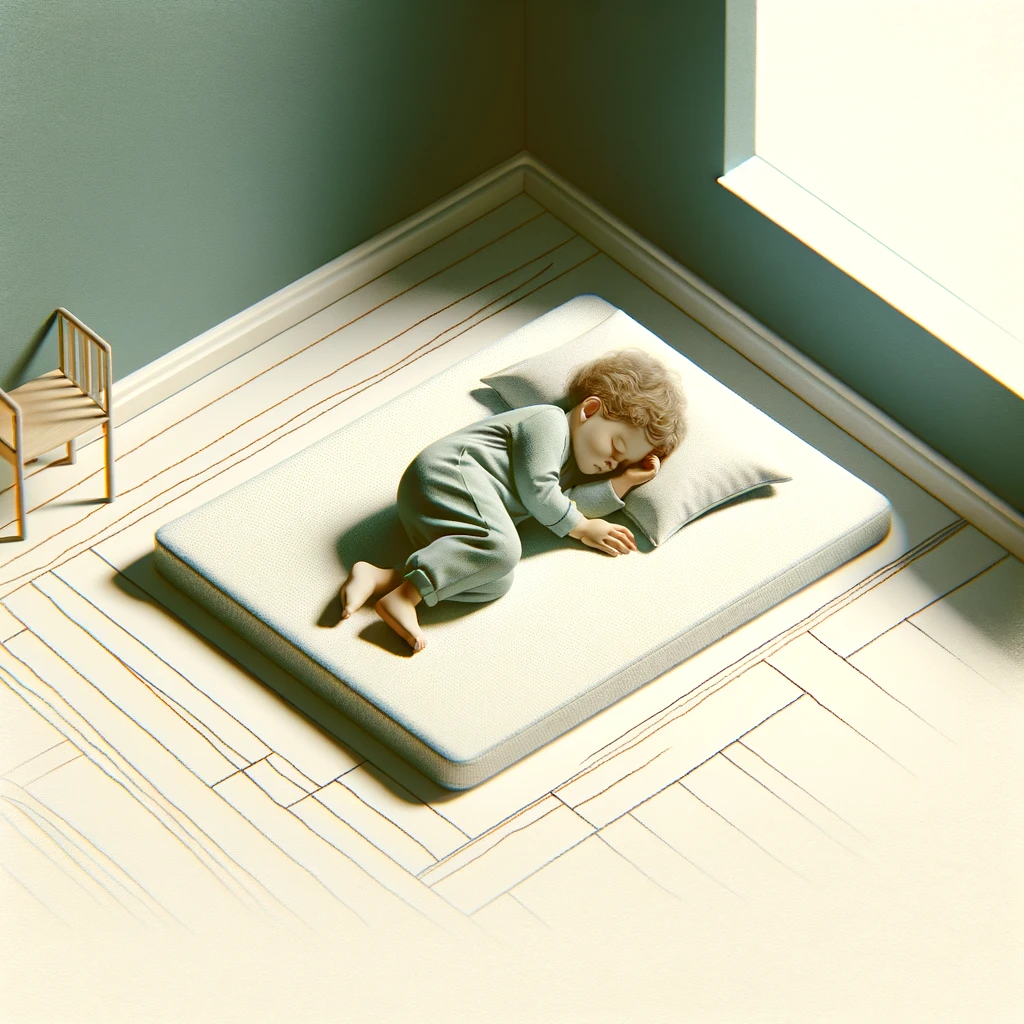In the Montessori approach to parenting, the concept of the floor bed has gained popularity. It is a supportive sleep environment for young children. Unlike traditional cribs, a floor bed offers children freedom of movement and independence. It also aligns with the Montessori philosophy of child-led learning and exploration. Here you will find the answer to why it is considered a cornerstone of Montessori parenting and practical tips for arranging one in your child’s room.
Why is the Floor Bed Montessori?
- Promotes Independence: The floor bed allows children to have autonomy over their sleep environment. Instead of being confined to a crib, children can get in and out of bed independently.This fosters a sense of freedom and self-reliance from a young age.
- Encourages Movement: When mattress is directly on the floor, it encourages children to move freely in and out of bed. This promotes gross motor development and allows children to follow their natural inclination to explore and play.
- Facilitates Self-Regulation: With a floor bed, children learn to self-regulate their sleep patterns. Without the confines of a crib, children can listen to their bodies. They determine when they are ready to sleep, wake up, or engage in quiet play.
- Supports Cognitive Development: The floor bed provides children with a safe and comfortable space for rest and relaxation. This conducive sleep environment supports cognitive development and emotional well-being, as children learn to associate sleep with comfort and security.

Arranging a Montessori Floor Bed
- Choose the Right Mattress: Select a firm mattress that provides adequate support for your child’s growing body. Opt for a mattress made from natural materials, such as organic cotton or wool. It creates a healthy sleep environment free from harmful chemicals.
- Create a Safe Sleeping Area: Clear the surrounding floor space of any hazards or obstacles to prevent accidents. Ensure that the room is childproofed and that electrical outlets are covered to promote a safe sleep environment.
- Consider Bedding Options: Keep bedding minimal and avoid using pillows, blankets, or stuffed animals in the sleep area. They can pose suffocation risks for young children. Instead, opt for a fitted sheet and lightweight blankets or sleep sacks for added warmth.
- Set Up a Comfortable Environment: Arrange the floor bed in a cozy corner of the room away from drafts or direct sunlight. Use soft lighting and soothing colors to create a calming atmosphere conducive to sleep.
- Encourage Independence: Empower your child to participate in the bedtime routine. Involve them in the process of preparing for sleep. Offer choices, such as selecting pajamas or a bedtime story, to foster independence and decision-making skills.

The Montessori floor bed offers numerous benefits for children, promoting independence, movement, self-regulation, and cognitive development. You can easily create a supportive sleep environment that nurtures your child’s growth and development Montessori way. Just see the principles behind the it and follow practical tips for arranging one. It doesn’t matter if you’re new to Montessori parenting or looking to incorporate Montessori principles into your child’s sleep routine. Such bed serves as a valuable tool for fostering independence and autonomy from infancy through early childhood.
Here are some options for floor beds:



